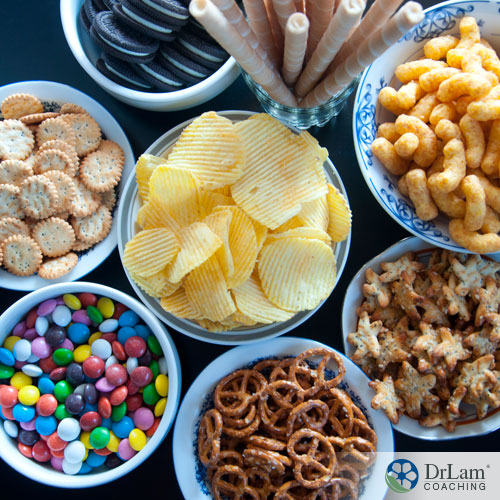 Processed food alternatives have been around since ancient times. The idea is not a new one, especially with the advent of animal husbandry and farming practices that saw our ancestors grow their food. They found ways to preserve their hard-won crops so that it lasted them during those times of the year when food was scarce and could not be grown. Meat, for example, were smoked, stored in brine, or dried, while fruit and vegetables were either dried or pickled to ensure a steady supply of food throughout the year.
Processed food alternatives have been around since ancient times. The idea is not a new one, especially with the advent of animal husbandry and farming practices that saw our ancestors grow their food. They found ways to preserve their hard-won crops so that it lasted them during those times of the year when food was scarce and could not be grown. Meat, for example, were smoked, stored in brine, or dried, while fruit and vegetables were either dried or pickled to ensure a steady supply of food throughout the year.
In those days, obesity and its associated health risks were the prerogatives of the rich, while the common man or woman had to tighten the proverbial belt a few notches, during hard times. Lack of any preservation techniques meant that they faced starvation, when food was scarce due to drought or when harvests failed.
This situation improved with the advent of the industrial revolution. The invention of machinery resulted in a large-scale canning industry and started other processes that helped develop the concept of food preservation. Using these new machines, food could be preserved easily. This ensured that not only was food readily available on-demand, if you could afford it, but it could also be shipped out as a commodity. Industrialization, therefore helped with food supply at home and abroad and it also boosted the economy.
Foods were now not only processed, but new methods of preservation were created to make the food look more presentable, with better coloring, flavor, and texture. This was done by introducing synthetic chemicals in the food which are called additives. As a result, the food began to have a higher concentration of sugar, fat, and sodium along with numerous artificial ingredients.
People now had access to foods from across the globe right on their local grocer’s shelf, whether tinned, packaged, or frozen. You can buy anything, including processed meats, boxed cereals, and tins of your favorite fruits. But there is a price.
There is no doubt that the myriad of processed foods we have available today certainly makes life easier. Just about every American household has a package of their child’s favorite cereal stored in the grocery cupboard. All you need to do is add some milk or, some cookies stashed in the cupboard as a treat? Not to mention the processed meat in the refrigerator waiting to be made into a sandwich.
But, are you aware that an estimated fifty percent of the American diet consists of calories obtained from these processed foods, with their long shelf life, additives, and artificial flavors? It is playing havoc on your health. There are alternatives, however, called the processed food alternatives, that you will recognize on the store shelves if you look for them or are more mindful of your purchasing choices. More on these later.
 Research strongly indicates that processed foods are unhealthy and is wreaking havoc on the average American. For every 10 percent increase in the consumption of processed foods, there is a 12 percent increase in the incidence of cancer, studies show.
Research strongly indicates that processed foods are unhealthy and is wreaking havoc on the average American. For every 10 percent increase in the consumption of processed foods, there is a 12 percent increase in the incidence of cancer, studies show.
Processed foods tend to be relatively high in fat, sugar, and sodium. While these may make the processed food of your choice more palatable, it could also lead to a number of health issues like obesity, high blood pressure, heart problems, and even diabetes.
Processed foods in general, lack nutritional value. Food processing, to a large degree, strips foods of their nutrients. Often these foods are fortified with vitamins, minerals, and fiber. Compared to unprocessed foods, these tend to burn fewer calories during the digestive process. The extra calories due to the added fats and sugar converts the processed food to a high-calorie product. It burns relatively fewer calories during digestion and this means that all the excess calories get stored in our bodies as fat.
The additives in processed foods tend to stimulate your brains feel good center called the dopamine center. This means that essentially every time you eat processed food, you feel happy and satisfied. With time, you start developing food cravings that will satisfy the dopamine rush.
It is estimated that more than 5,000 different chemical substances get added to our food. In many cases, they are not even tested for safety and health effects by anyone except those companies using them, which is worrying.
Inflammation is part of your body’s response to stress, whether this stress is due to environmental, physical, or psychological factors. Without this response, a wound, for example, would not heal and may get worse in the presence of pathogens. But inflammation can also occur inside the body in the absence of a wound. Numerous health conditions like heart problems, diabetes, and various autoimmune conditions such as lupus and rheumatoid arthritis have been linked to this internal inflammation.
Certain chemicals present in processed food may cause internal inflammation of the organs or their linings. This can be painful and may need healthcare intervention. Few examples of these processed foods are refined carbohydrates, fried foods such as french fries, soda, sweetened beverages, and processed meat like hot dogs.
The processed foods may affect your body’s inflammation circuit quite badly and consequently, affects your adrenal function and body’s bioenergetic circuit as well.
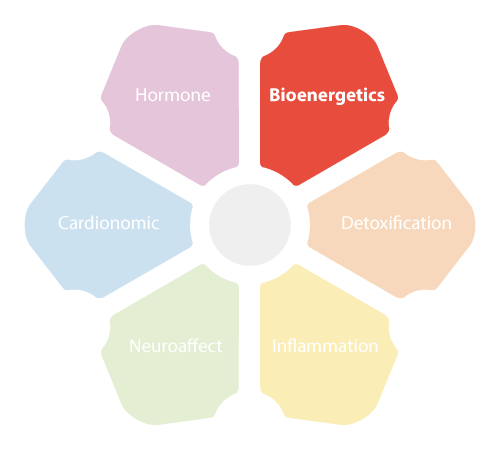 The Bioenergetic Circuit is one of the six interrelated organ systems in your body that is governed by your NeuroEndoMetabolic (NEM) stress response.
The Bioenergetic Circuit is one of the six interrelated organ systems in your body that is governed by your NeuroEndoMetabolic (NEM) stress response.
The main organs in this bioenergetic circuit are the pancreas, thyroid, and liver. Harmony between these organs results in a balance between certain hormones like insulin, cortisol, and thyroid hormone which work in synergy and aid in keeping you healthy. A hormone imbalance, on the other hand, may result in adrenal fatigue, obesity, and numerous other health conditions that could become chronic.
Examples of symptoms associated with a compromised Bioenergetic Circuit include, amongst others, thyroid issues, excess weight gain that could result in obesity, insulin resistance, diabetes, and high cholesterol.
A good diet is one of the most effective ways of promoting the health of your bioenergetic circuit. Eating healthy foods, including processed food alternatives, and avoiding those that contribute towards inflammation, is always recommended.
While processed foods are a quick, easy option for those with a busy lifestyle, there are healthier processed food alternatives that you could choose. And to make things easier, you can buy these processed food alternatives right off the shelf, keeping your preparation time to a minimum while ensuring your family’s food choices are safer and at the same time not feeling like they are missing out on anything. The following are some of the examples of processed food alternatives.
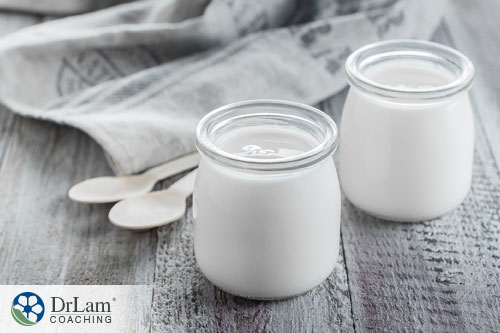 Most flavored yogurts have additives and extra sugar added. Plain Greek yogurt, on the other hand, is one of the processed food alternatives that does not contain sugar and can easily be spiced up. You could, for example, add some fresh fruit like apples or strawberries, and add some cinnamon or raw honey for a little extra flavor without breaking the bank. Even better, plain greek yogurt has a higher protein count than the highly processed variety.
Most flavored yogurts have additives and extra sugar added. Plain Greek yogurt, on the other hand, is one of the processed food alternatives that does not contain sugar and can easily be spiced up. You could, for example, add some fresh fruit like apples or strawberries, and add some cinnamon or raw honey for a little extra flavor without breaking the bank. Even better, plain greek yogurt has a higher protein count than the highly processed variety.
There are several processed food alternatives to consider instead of a cup of coffee or a can of soda. Did you know that a can of diet soda carries almost as much caffeine as a single shot of your favorite espresso?
A great option is flavored seltzer water if you like bubbles or just ordinary water. If you want some flavor, you could add some berries, slices of cucumber, lemon wedges along with some herbs. Drinking fresh water would help you stay hydrated and also keep you from binging on food, as your brain often mistakes thirst for hunger. In turn, it helps with digestion.
Many of us have a pantry stocked with different sauces, whether it is for marinating the chicken or dressing the green salad. These variety of sauces are highly processed and loaded with additives and sugar. The sugar content is much higher than normal, especially in those that are labeled as low fat. So, the term low-fat is misleading because they are usually not that healthy.
Good processed food alternatives to these sauces include a dry rub for your meat, or a homemade salad dressing using organic virgin olive oil and herbs of your own choice.
Potato chips are an every-day American snack, especially while watching a game on television. But regular chips are full of fat, and while the fat-free option is often made from Olestra. Olestra may have many side-effects, including diarrhea. Also, potato chips are a low-fiber and high-calorie food, with low nutrient value. They are not very filling as well because of low fiber content, which means you tend to overeat potato chips.
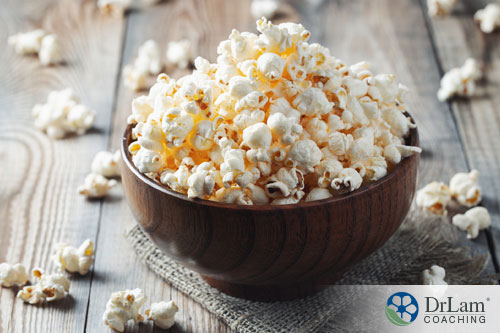 Popcorn is a good example of processed food alternatives to potato chips. Popcorns are low fat and low calories in comparison and packed with fiber and antioxidants. The body’s inflammation process benefit from antioxidants. Add a dash of organic extra virgin olive oil, a sprinkle of your favorite herbs, and a pinch of grated Parmesan cheese for extra flavor.
Popcorn is a good example of processed food alternatives to potato chips. Popcorns are low fat and low calories in comparison and packed with fiber and antioxidants. The body’s inflammation process benefit from antioxidants. Add a dash of organic extra virgin olive oil, a sprinkle of your favorite herbs, and a pinch of grated Parmesan cheese for extra flavor.
Interestingly, cookies can also be processed with additives and food colors. That is because not all cookies are created equal. It is important to check the label and preferably use one of the processed food alternatives.
Broadly, cookies can be of two types. Those made with whole grains and have ingredients like cranberries, nuts, and sunflower seeds and are high in fiber. The complex carbohydrate also makes them quite filling. The other is the processed variety, made of refined flour, saturated fats and has high sugar content. As you can see, the former is one of the processed food alternatives.
An egg is an egg, right? Not quite! Egg substitutes are found on just every grocery store shelf. These substitutes are processed foods with several chemical additives. Regular eggs, on the other hand, are a rich source of nutrients like choline that boosts the health of your liver and improve memory. Lutein is another protein found in the egg that helps in good eye health. In short, the natural egg is better than the perceived substitute.
Many American households have cereal for breakfast. The pre-packed, quick to cook oatmeal variety, is often the cereal of choice.
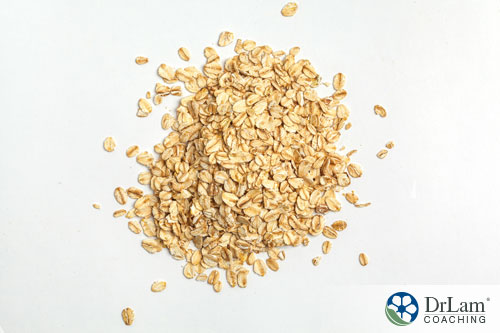 While regular oatmeal is low-glycemic, takes a while to digest, and keeps you full for some time, the processed oatmeal is just the opposite. It has a high glycemic index which means that it digests quickly and you are hungry very soon. They may also contain salt and sugar to enhance the taste.
While regular oatmeal is low-glycemic, takes a while to digest, and keeps you full for some time, the processed oatmeal is just the opposite. It has a high glycemic index which means that it digests quickly and you are hungry very soon. They may also contain salt and sugar to enhance the taste.
Even though the regular oatmeal takes longer to cook, you can prepare it in advance and store it in the freezer. This would save you time and importantly save you from another of the processed food alternatives.
When it comes to processed food alternatives you can indeed have your cake and eat it too. In this modern world, we do prefer the convenience and good taste and processed food is the perfect solution. We are increasingly becoming aware of the harmful effects of these processed foods. Additives and colorings are added to make these foods attractive, which are in fact harmful. They affect our digestive system and that is why you should be very cautious about processed food if you have adrenal fatigue.
Alternatives to these processed foods are not only safe but also tasty. The key is to make the right choice by eating processed food alternatives. This will help you lead a healthier, longer and happier life.
© Copyright 2020 Michael Lam, M.D. All Rights Reserved.
While processed food alternatives may not actively support weight loss, they may support adrenal function. They are, essentially, a healthier option to processed foods. This implies that they may combat further weight gain, and in so doing, be of help as great food choices for those with weight issues.
